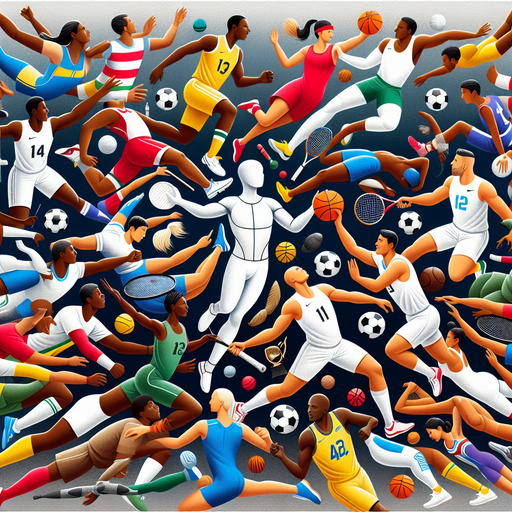What Is The Whitest Sport

Sports have a unique way of bringing people together, transcending cultural and geographical barriers. Yet, when we look closely, some sports have clear demographic patterns. This raises the question: What is the whitest sport? This examination is not just about racial demographics but also dives into historical, cultural, and socioeconomic factors that influence sports participation.
Understanding Demographics in Sports
Before identifying which sport holds the title of being the "whitest," it's essential to understand what this term implies. The "whitest sport" refers to a sport predominantly participated in by people of Caucasian descent. This observation is not merely about racial composition but involves examining the history, accessibility, and cultural associations linked with various sports.
Historical Context
Historically, sports like golf, tennis, and skiing have been associated with predominantly white participants. This association stems from several factors, including the socioeconomic barriers to entry, such as expensive equipment or membership fees, and historical exclusivity, where certain clubs or competitions were not open to people of color.
Socioeconomic Factors
Socioeconomic status plays a crucial role in sports participation. Sports that require significant financial investment, such as sailing, equestrian, or ice hockey, tend to have a higher percentage of white participants. These sports often require expensive gear, training, and travel, making them less accessible to lower-income families, which disproportionately affects communities of color.
Cultural and Geographic Influences
Geography also influences the racial makeup of sports. In regions where the population is predominantly white, sports participation will naturally reflect this demographic. Additionally, cultural preferences and traditions play a significant role. For instance, sports like cricket or soccer may be more popular in some cultural communities than others.
Breaking Down the "Whitest" Sports
When examining the data, sports like golf and tennis often come up as examples of predominantly white sports. A 2018 study by the National Golf Foundation found that approximately 77% of golfers in the U.S. were white. Similarly, tennis, despite efforts to diversify, still sees a high percentage of white players, particularly at amateur levels.
Winter sports also see a high participation rate among white athletes. Skiing and snowboarding, for instance, have been historically dominated by white individuals, partly due to the geographic and economic factors mentioned earlier.
Efforts Towards Inclusivity
Many sports organizations are actively working to break down these barriers and promote diversity. Initiatives aimed at increasing accessibility, such as community outreach programs and scholarships for underrepresented groups, are vital steps towards a more inclusive environment.
Furthermore, the visibility of successful athletes of color in traditionally "white" sports has inspired new generations to participate, slowly changing the demographic landscape.
Conclusion
While sports like golf, tennis, and skiing might currently have a majority of white participants, the landscape is gradually evolving. The notion of the "whitest sport" is rooted in historical, cultural, and socioeconomic factors that are continually being challenged and redefined. As inclusivity and diversity become focal points, the hope is for all sports to become accessible and welcoming to everyone, regardless of their racial or socioeconomic background.
The journey towards a more diverse sporting world is ongoing, and it requires the collective effort of communities, organizations, and individuals committed to change.